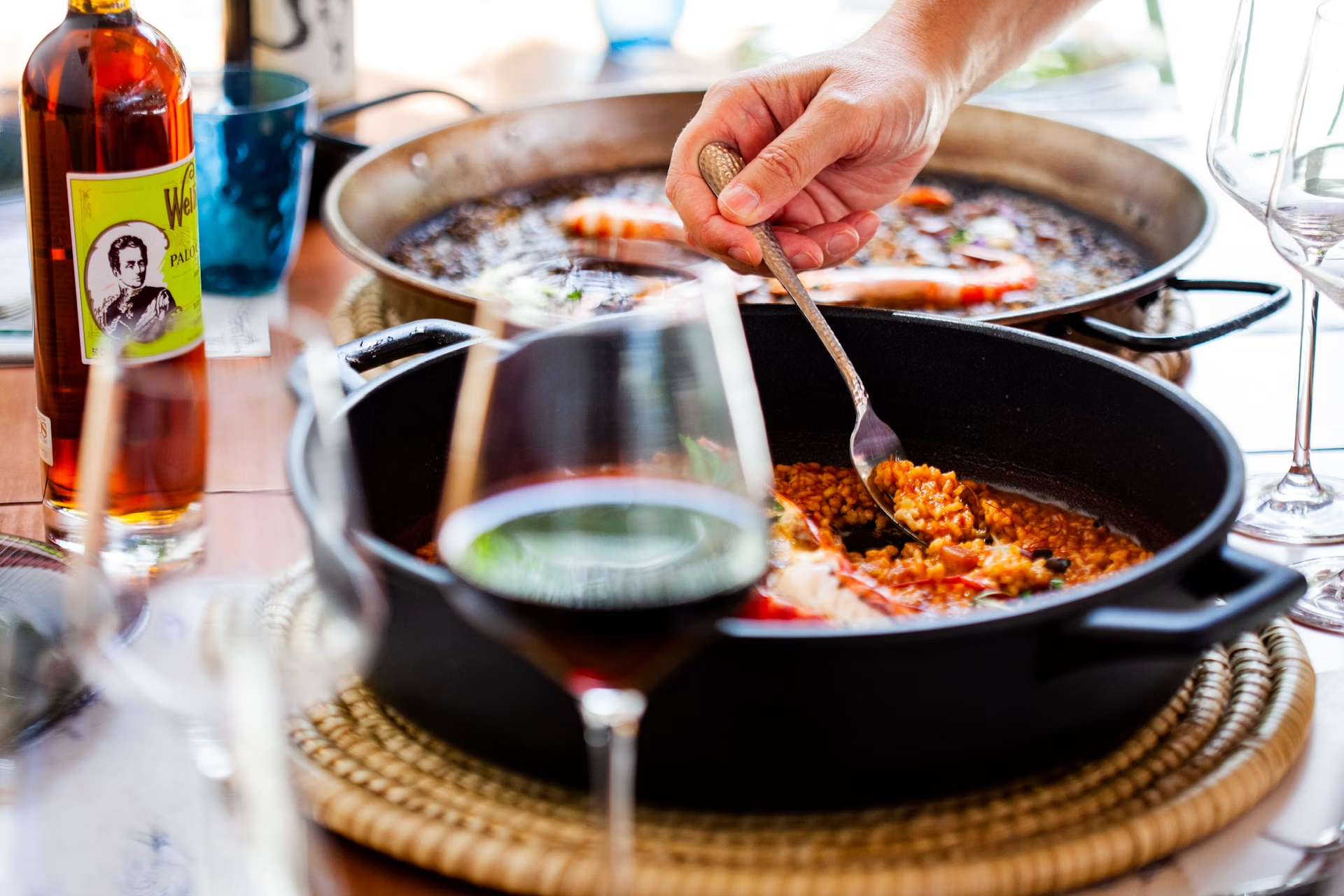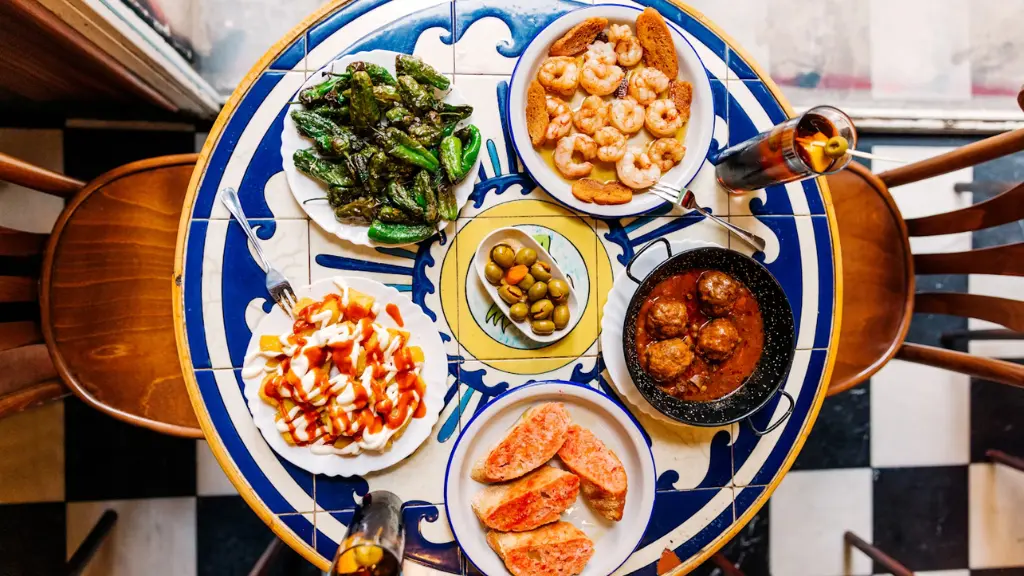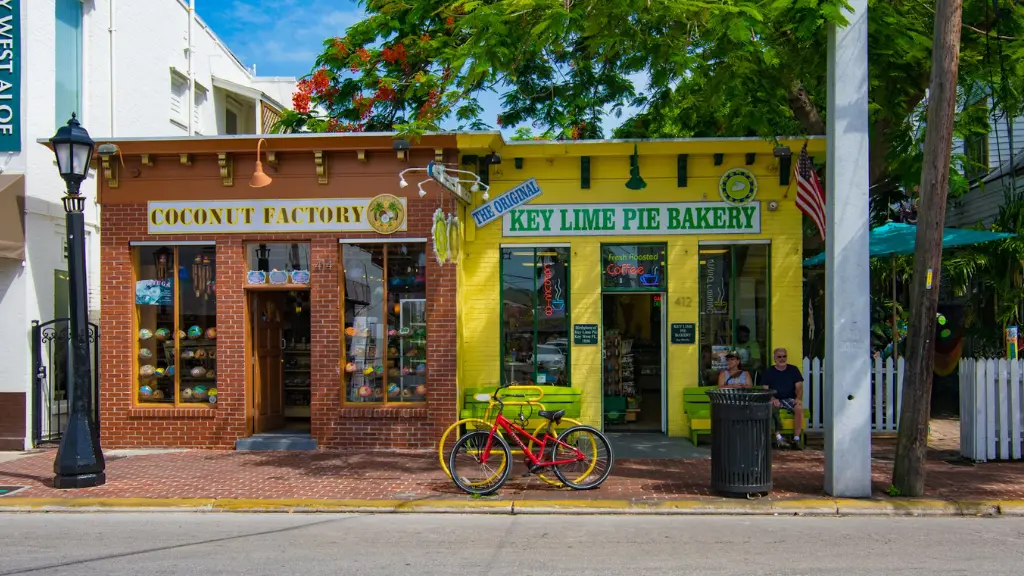Spain is a country renowned for its vibrant food scene, with cities like Barcelona, Madrid, and Seville often topping the culinary travel list. However, beyond the well-known gastronomic hubs, there are numerous hidden gems that offer unique flavors and unforgettable experiences.
These lesser-known food capitals are perfect for adventurous foodies seeking to explore the diversity of Spanish cuisine. Let’s uncover some of Spain’s unsung food capitals and delve into their rich culinary traditions.
You May Also Like: Puerto Rico’s Culinary Delights

1. San Sebastián: The Jewel of Basque Cuisine
Nestled in the Basque Country, San Sebastián is a food lover’s paradise. While it’s not as famous as Barcelona or Madrid, it is home to some of Spain’s best chefs and most innovative dining experiences.
Gastronomy in San Sebastián
The city boasts an incredible concentration of Michelin-starred restaurants, including Arzak, Mugaritz, and Akelarre. But it’s not just about high-end dining. San Sebastián’s pintxos (the Basque version of tapas) are legendary.
- Pintxos Bars: Wander through the narrow streets of the Old Town (Parte Vieja) and sample bite-sized delicacies like txangurro (spider crab), jamón ibérico, and gilda (pickled anchovy skewers).
- Local Delicacies: Don’t miss the Basque cheesecake, a rich, creamy dessert that’s become a global sensation.
San Sebastián’s food scene is a combination of traditional Basque cooking and avant-garde techniques, making it a must-visit for any culinary enthusiast.
2. Valencia: The Heart of Paella
Valencia, located on Spain’s Mediterranean coast, is the birthplace of the famous dish, paella. While the city is known for its beautiful beaches and vibrant festivals, its culinary identity is deeply rooted in rice dishes and fresh seafood.
Valencia’s Gastronomy
- Paella: While many associate paella with Spain as a whole, Valencia is where this iconic dish originated. The traditional paella Valenciana is made with rabbit, chicken, and a mix of vegetables and saffron-infused rice.
- Seafood: Valencia is known for its fresh seafood, particularly horchata (a sweet, milky drink made from tiger nuts) and fideuà, a seafood-based noodle dish.
The city’s Mercado Central is a bustling hub for food lovers, offering fresh produce, seafood, and local delicacies. Valencia is a paradise for those looking to explore Spain’s coastal culinary offerings.
3. Cádiz: The Flavor of Andalusia’s Coast
Cádiz, located on the southern coast of Spain in Andalusia, is a charming city with a rich food culture influenced by its coastal location and Moorish history.
Cádiz’s Gastronomy
The food in Cádiz is characterized by its use of fresh fish and seafood, which are the stars of the local cuisine. You’ll find plenty of fried fish (pescaito frito) and tuna dishes, particularly the famous atún rojo (red tuna).
- Tuna Dishes: Cádiz is known for its tuna fishing, and dishes like tuna with tomato or tuna tataki are popular in the region.
- Churros de Pescado: Similar to the classic churros but made with fish, this fried snack is a local favorite.
You can experience this fresh seafood at the Mercado Central de Abastos, where the fishmongers proudly display the day’s catch. The market is a great place to experience authentic flavors.

4. Salamanca: A Taste of Castilian Tradition
Salamanca, located in western Spain, is often overshadowed by larger cities, but it has a rich culinary history that reflects its Castilian roots. The region is known for hearty, rustic dishes that emphasize quality meats and rich flavors.
Salamanca’s Gastronomy
- Jamón de Guijuelo: This area is renowned for producing some of the finest jamón ibérico (Spanish cured ham). The ham is made from free-range pigs and aged to perfection, offering a depth of flavor that is unrivaled.
- Chanfaina: A traditional dish made with lamb, rice, and spices, showcasing the region’s love for rich, savory stews.
Salamanca is also home to one of Spain’s most celebrated markets, Mercado de San Juan, where you can pick up cured meats, cheeses, and local wines.
5. Zaragoza: A Culinary Crossroad in Aragon
Zaragoza, located in the northeastern region of Aragon, is often overlooked by tourists, but its food scene is worth the trip. The city is a crossroads of cultures, with influences from the Moors, Jews, and Christians, which is reflected in its diverse culinary offerings.
Zaragoza’s Gastronomy
- Ternasco de Aragón: This local lamb dish is slow-cooked and flavored with garlic, rosemary, and other herbs, making it a must-try when in the region.
- Bodegas and Tapas Bars: The city has a great tradition of tapas, especially in the historic El Tubo neighborhood, where visitors can hop between small bars serving local specialties.
Zaragoza is an ideal destination for anyone looking to explore traditional Aragonese cuisine, paired with fine local wines.
6. Bilbao: The Heart of Basque Culinary Innovation
Bilbao, also in the Basque Country, is home to a dynamic food scene that combines tradition with cutting-edge culinary innovation. The city has become a hub for gastronomic creativity, making it one of Spain’s most exciting culinary destinations.
Bilbao’s Gastronomy
- Bacalao a la Vizcaína: Salted cod in a rich, smoky tomato sauce, a dish that captures the essence of Basque cuisine.
- Innovative Tapas: Bilbao has a thriving pintxos scene, where chefs experiment with modern takes on traditional dishes.
The city’s La Ribera Market is the perfect place to explore local produce, meats, and seafood, while also indulging in the region’s most popular dishes.
7. Girona: Catalonia’s Culinary Masterpiece
Girona, located in the northeastern corner of Spain in Catalonia, may not have the same international fame as Barcelona, but it is a culinary capital in its own right. Known for its Michelin-starred restaurants and innovative chefs, Girona is a must-visit for food lovers.
Girona’s Gastronomy
- Empedrat: A Catalan dish made with salted cod, beans, tomatoes, and garlic.
- Cava: The region is famous for its sparkling wine, cava, which pairs perfectly with many Catalan dishes.
Girona is a city where food and culture intertwine, and the Mercat de Lleó is a great place to dive into local ingredients.
Conclusion
While cities like Barcelona and Madrid often steal the spotlight, Spain’s unsung food capitals offer a culinary journey filled with rich traditions, bold flavors, and authentic experiences. From the pintxos of San Sebastián to the seafood of Cádiz, each region has something unique to offer. Exploring these lesser-known food capitals not only introduces you to some of Spain’s best-kept culinary secrets but also provides a deeper connection to the heart of Spanish culture.
So, the next time you’re planning a trip to Spain, consider stepping off the beaten path and discovering these hidden culinary gems that promise to leave your taste buds craving more.











[…] You May Also Like: Discover Spain’s Unsung Food Capitals […]